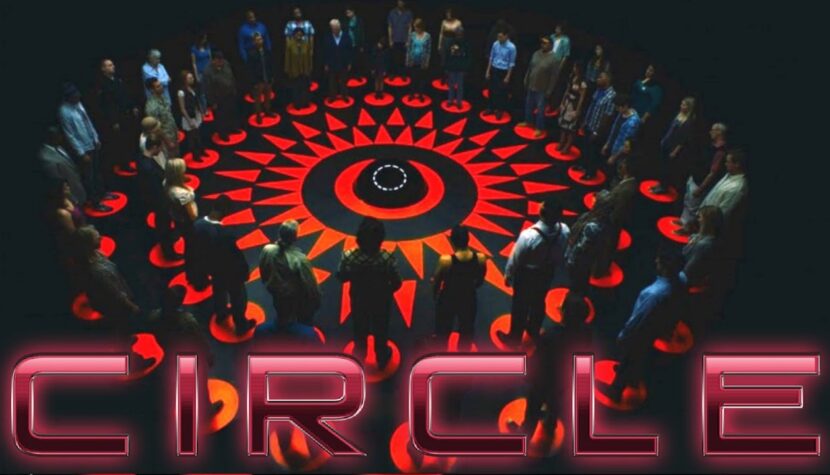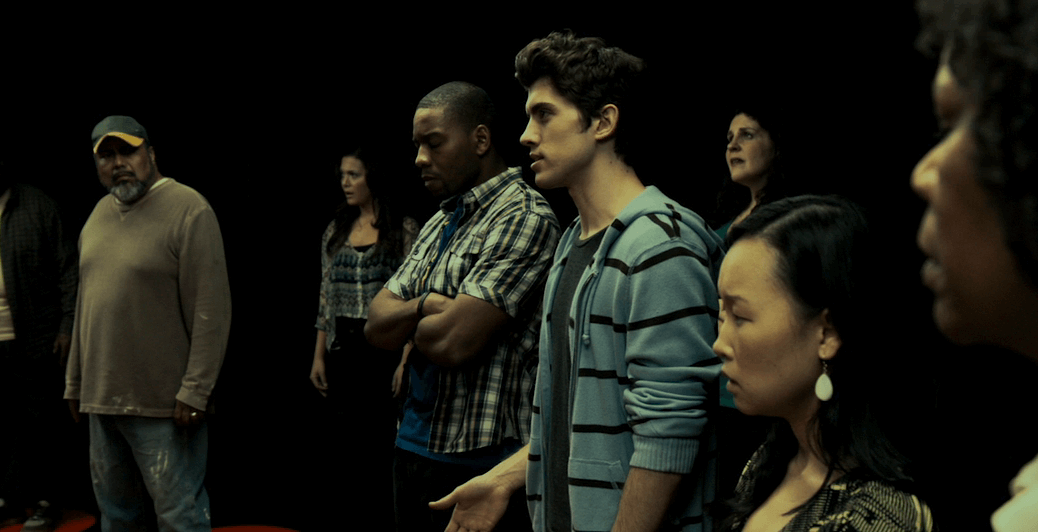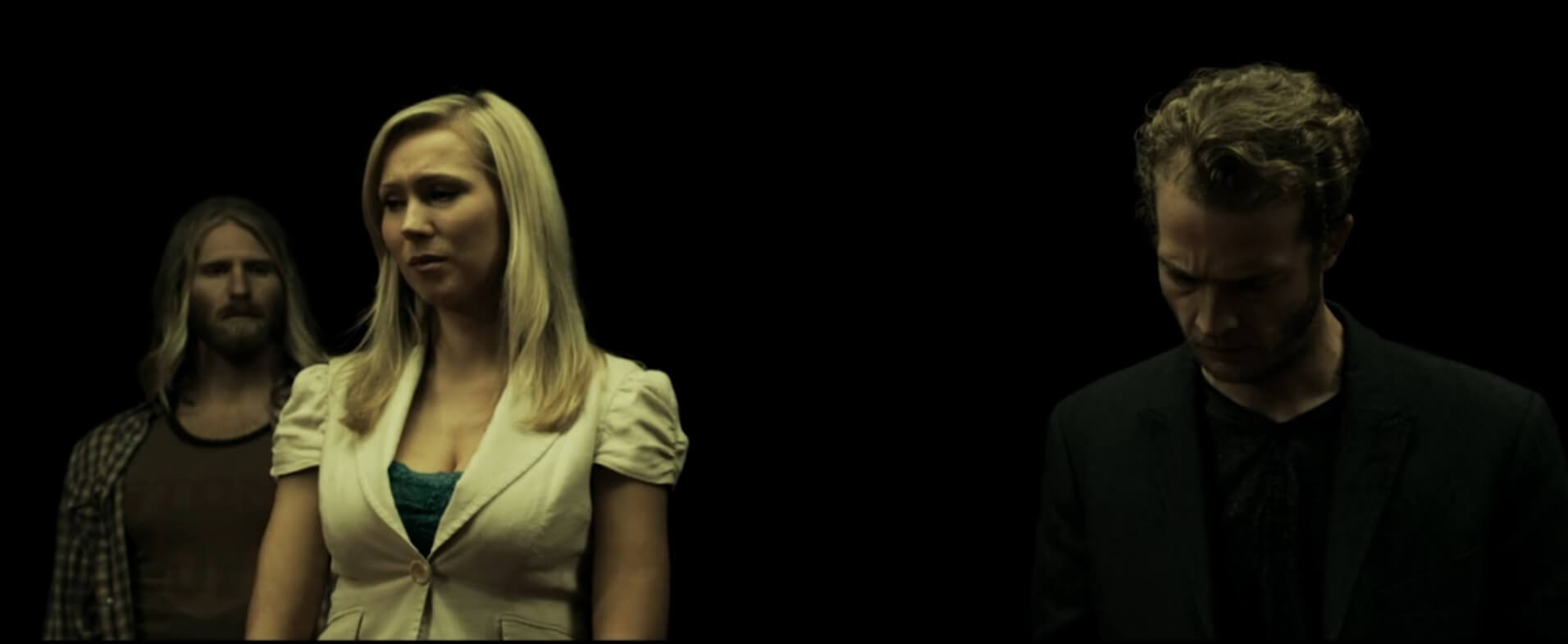CIRCLE. Science fiction thriller… almost like a Cube

Although this unwritten rule sounds like a worn-out slogan, not everyone remembers it. Especially not the debutants in the world of filmmaking. The creators of the low-budget science fiction thriller titled Circle fell into a typical trap. Despite having a good idea and an interesting concept, they failed to convey it professionally. So, let the sponsor of this episode be the phrase: fundamentally good intentions cannot compensate for the executional mediocrity.
And the theme was good, if not excellent, and only required a solid execution. In Circle, fifty strangers wake up in a dark room, not knowing what is happening. They are all gathered in a circle around a mysterious sphere emitting deadly beams of power, killing individuals. The action scene resembles a game show studio, but it quickly becomes apparent that their lives are at stake in the game they are forced to participate in. The players must decide, through voting, who among them should die next. Who deserves death? Every two minutes, another judgment must be made, or the machine will randomly eliminate participants. 
In the case of Circle, we are dealing with an obvious déjà vu. A trap without an exit, where the characters are trapped, reminiscent of the one known from Cube – the cult thriller by Vincenzo Natali. The similarity is evident from the title itself, which opts for a concise word, also referring to the shape. Although the result of the experiment conducted on participants in Circle is in many ways similar to what we remember from Cube, the way it is carried out leaves much to be desired and questions its professionalism. The squandering of the potential arising from the mystery – what should drive such a story and provide the audience with motivation to follow its course – is also evident in Circle. The ambiguous situation in Circle is perceived by the characters in an obvious way, as if what hides behind the curtain is irrelevant.
In Circle, we are faced with another social commentary. The direction the story will take and, importantly, the messages that will emerge from it can be sensed after the first scenes of the film. The goal was to depict social mechanisms where unconditional participation is synonymous with walking blindfolded along the paths of stereotypes, prejudices, and misguided labeling. It also aimed to emphasize the fact that a person pushed against the wall often forgets about the moral backbone instilled by culture. They will fight for survival exactly like the desperate rat in a medieval torture device, where the opposite wall for the cage full of rodents was the face of the individual, also serving as the only way out for the animals. However, there will be those willing to sacrifice their lives in the name of honor, dignity, and another higher principle. The most difficult question posed by the debut duo of creators – Aaron Hanna and Mario Miscione – is: does the fact that as humans, we possess a conscience, understood as the ability to evaluate, distinguish between good and evil, determine our strength, or evident weakness?

The goals set by the creators were only partially achieved. It depends solely on the viewer’s intelligence what valuable insights they will extract from the film. This is by no means a flaw of Circle. Instead of creating real characters, the creators preferred to focus on wax figures whose task was to play specific roles. Their veins do not flow with blood, and their behavior lacks naturalness. The truth is that if this fantastic situation were to happen for real, the experiment would end in the first ten minutes of its duration. Panic would quickly take its toll, induced by the barrier in making rational, cold choices in a threatening situation. I can assure you that no one would stand so politely in their circle, not confirming whether the person next to them is actually dead or simply unconscious.

Aaron Hann and Mario Miscione had good intentions, which I want to emphasize once again. I’ll go even further. Looking at how warmly their film was received among the audience (which I infer only from comments on forums), I would venture to say that “Circle” did what it was supposed to do – it intrigued, raised important questions, and, most importantly from a pragmatic point of view, promoted the names of the young authors. Their film debut may soon turn into a ticket to Hollywood and greater opportunities. However, I wish them to put a bit more effort into scriptwriting and translating its assumptions into action in their future projects (taking into account obtaining a larger budget). Just as the fifty characters created by them fall victim to superficial judgment, the film ultimately falls victim to a superficial approach to the main theme. Human behaviors examined in Circle are, however, somewhat more complex and intricate.
This sociological interpretation, resembling a student essay, did not resonate with me, but it will undoubtedly find its enthusiasts.

